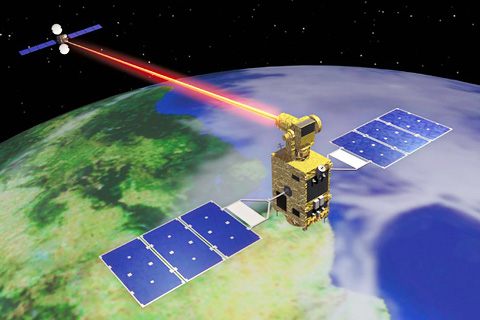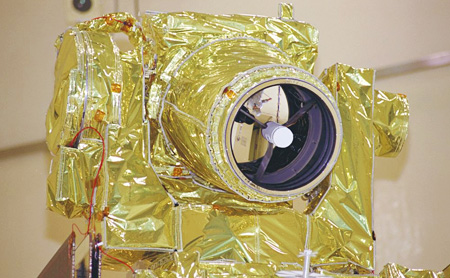Project Topics
indexKIRARI: Signals stopped; successful operation ends

|
At 2:48 p.m. on Sept. 24, 2009, signal transmissions to the Optical Inter-orbit Communications Engineering Test Satellite "KIRARI" (OICETS) were terminated, and its operation was completed. The KIRARI was initially scheduled to be operated in orbit for about one year, but it survived for four years, much longer than the original plan. The KIRARI was launched by the Dnepr Launch Vehicle from the Baikonur Cosmodrome, Kazakhstan, on Aug. 24, 2005, and made many achievements in the space optical co... |
|---|
Press Release
indexAbout Optical Inter-orbit Communications Engineering Test Satellite "KIRARI"

|
KIRARI, the Optical Inter-orbit Communications Engineering Test Satellite, enables communications between satellites via optical links.KIRARI (OICETS) will enable optical inter-orbit communications tests between satellites that are tens of thousands of kilometers apart. An optical inter-orbit communications system will bring various advantages: more stable communications with less interference; lighter, more compact communications equipment; and higher data transmission rates. These tests are expected to lead to new technologies that will support the development and utilization of space, including global data reception from Earth Observation satellites and continuous communication links with a manned space station. OICETS was launched on August 24, 2005 by a Dnepr rocket from the Baikonur Cosmodrome and named "KIRARI", in order to conduct demonstrations with ARTEMIS, the latest geostationary satellite belonging to the European Space Agency (ESA). |
|---|
Characteristics of Optical Inter-orbit Communications Engineering Test Satellite "KIRARI"
Communications Engineering Tests
|
The distance between ARTEMIS, a stationary satellite, and KIRARI (OICETS), positioned in a low Earth orbit, is around 45,000 km at its maximum point. As a result, optical inter-orbit communications tests require elements such as high-gain optical antennas, a high-power semiconductor laser, and highly sensitive signal detectors. Using these devices, we will be able to test such operations as beam acquisition, to take in an incoming laser beam; beam tracking, to detect and control the angle of the incoming laser; and beam pointing, to transmit a laser beam accurately in the right direction, taking into consideration the relative motion between the two satellites. |

|
|---|
Major Characteristics
| International Designation Code | 2005-031A |
|---|---|
| Launch Date | 06:10, August 24, 2005 (JST) |
| Launch Vehicle | Dnepr launch vehicle |
| Location | Baikonur Cosmodrome, Kazakhstan |
| Shape | Dimensions : Box-shaped satellite with dimensions of 0.78 m x 1.1 m x 1.5 m Total length of the Solar Array Paddles (after deployment) 9.36 m |
| Weight | Approx. 570 kg |
| Orbiter | Circular orbit |
| Altitude | Approx. 610 km |
| Inclination | Approx. 98 degrees |
| Period | Approx. 97 minutes |
| Attitude Control | Three-axis stabilization |
